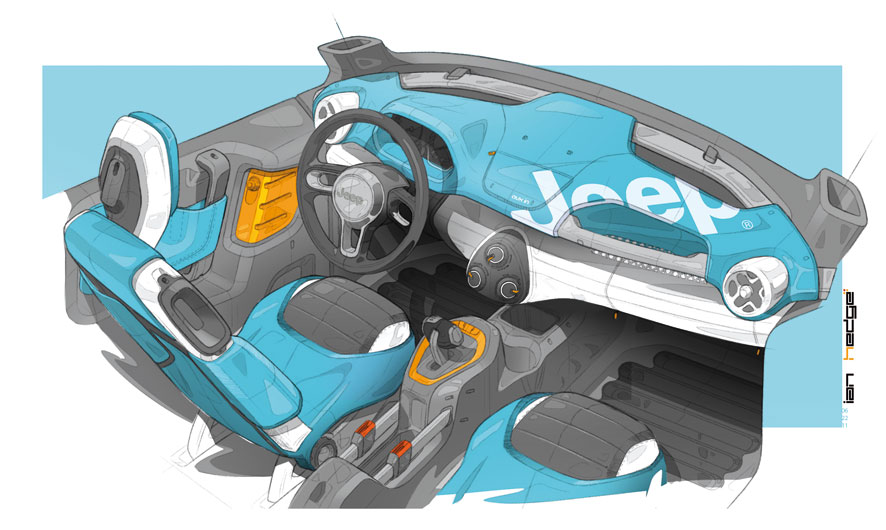Earmarked to embody global brand strategy, the Jeep Renegade, in the intentions of Auburn Hills’ designers, combines a historic styling heritage with a completely new design, conceived to attract the young customer. Designed in America and produced at Melfi in Italy, it is the most complete expression yet of the union of Fiat and Chrysler. But above all it represents the American manufacturer’s entry into the growing segment of small Suvs. “With a determined look, sturdy shape and aggressive proportions,“ Mark Allen explains, “the new Renegade is an authentic Jeep and has been developed to guarantee benchmark off-road capability for its category and to represent American design and ingenuity, suitable as it also is for use in town”.

Allen is head of Jeep design. Speaking of dimensions he recalled that the very first Jeep – the 1941 Willys – was also small: throughout the work on the Renegade an example of that icon was parked in the design office. The Renegade is the first vehicle to use Small Wide 4×4 modular architecture that can be adapted to a variety of models of different dimensions, and extensive use is made of special advanced steels and composites. “At the beginning”, he says, “ we did not really know what direction to move in. We were still working on the new Cherokee which has a steeper slope to its windscreen and front, but this didn’t seem to be the way to go. Little by little a concept made headway that had its roots in the Wrangler: vertical front, vertical windscreen, square shoulders, in short a box shape”.

The winning design, selected from among the hundreds of early sketches and renderings done in pursuit of a determined, versatile and functional style, was the work of Jeremy Glover, a young designer who had just completed his studies and was on his first important project. Even after the examination of the six models in scale 3:8 it was Glover’s, at that point reproduced full scale in clay, that passed the test. The same designer then moved to the Fiat style centre under Lorenzo Ramaciotti in Turin, to follow the model’s further development; flanked by another young designer from Auburn Hills, Ian Hedge, who had developed the winning idea for the interiors under the guidance of Klaus Busse.

“The Renegade is not just a Jeep entry point, it is a vehicle with its own looks and features”, Allen explains. “The traditional seven slit grille lends it character, as does the headlight fairing or the black roof that connects and explains the tall vertical pillars. For years we designers have been raising the belt line, well with the Renegade we have lowered it: the feisty wheel-body proportions give it a sturdy appearance while the cladding of the classic trapezoidal wheel arches add to its off-road looks, as do the very short overhangs”.
Then we have the “X” patterns: on the tail and roof, for example, as well as on the tail-lamps. “The team”, Allen explains, “dug out another piece of Jeep history, those jerrycans used to carry fuel during the war, reinforced with an X-shaped indentation. The X also appears in the interior where great attention has been paid to detail, use of quality materials, last generation technological content and innovative colour combinations.
The article continues in Auto & Design no. 208
C’è poi il motivo delle forme a X: in coda e sul tetto, per esempio, oltre che nei fanalini. «I ragazzi – spiega Allen – l’hanno ricavato da un altro pezzo di storia della Jeep, quei jerrycan per benzina usati in guerra, rinforzati con un’indentazione a forma di X». La X compare anche negli interni, caratterizzati da attenzione ai particolari, uso di materiali di pregio, contenuti tecnologici di ultima generazione e innovative combinazioni di colori.
L’articolo continua su Auto & Design n. 208











